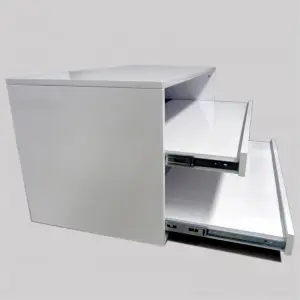სექ . 15, 2024 15:59 Back to list
shop planning
Shop Planning A Blueprint for Success
Effective shop planning is crucial for the success of any retail business, whether it’s a small boutique or a large department store. The layout, organization, and management of a retail space can significantly influence customer experience, sales, and overall operational efficiency. This article delves into the key aspects of shop planning and its vital role in boosting business performance.
One of the primary components of shop planning is the store layout. A well-thought-out layout guides customers through the store in a way that encourages exploration and, ultimately, purchases. There are several common layouts, including grid, racetrack, and free-flow designs, each catering to different types of shops. The grid layout, for instance, is often used in grocery stores, maximizing product display while facilitating quick customer navigation. In contrast, a free-flow layout allows for a more relaxed shopping experience, encouraging shoppers to wander through the store, which can be especially effective in boutiques and specialty shops.
Merchandising is another critical aspect of shop planning. This involves strategically placing products to attract customer attention and drive sales. Effective merchandising goes beyond mere placement; it encompasses the use of colors, signage, and promotional displays. Seasonal displays, for example, can create a sense of urgency and boost sales during holidays. Additionally, understanding customer behavior and preferences can help shop owners to position best-selling items at eye level and create enticing point-of-sale displays to encourage last-minute purchases.
shop planning

Shop planning also involves considering the flow of customer traffic. Analyzing how customers move through the store can help retailers make informed decisions regarding product placement and aisle configuration. Traffic flow should be intuitive, allowing customers to navigate easily without feeling rushed or frustrated. This not only enhances the shopping experience but also maximizes the time customers spend in the store, increasing the likelihood of purchases.
Furthermore, the effective use of technology in shop planning cannot be overlooked. Point-of-sale systems, inventory management software, and even customer relationship management tools can streamline operations. By integrating technology into shop planning, retailers can track sales trends, manage stock levels efficiently, and foster better customer engagement through targeted marketing efforts.
Lastly, creating an inviting atmosphere is essential in shop planning. Factors such as lighting, color schemes, and even scent play a significant role in shaping the overall shopping experience. A warm and welcoming environment encourages customers to stay longer and engage with products, leading to increased sales. Moreover, incorporating elements like comfortable seating areas or interactive displays can further enhance customer satisfaction.
In conclusion, effective shop planning is an intricate blend of layout design, merchandising strategies, customer traffic analysis, technological integration, and atmospheric considerations. Retailers who invest time and resources into planning their shop layout and operations are more likely to create a satisfying shopping experience, leading to increased customer loyalty and higher sales. In an increasingly competitive marketplace, proper shop planning stands out as a crucial element of retail success.
-
The Benefits of Electronic Shelf Labels for Modern Stores
NewsJul.01,2025
-
Space-Saving Retail Store Furniture Designs for Small Shops
NewsJul.01,2025
-
Slatwall vs. Gridwall: Which Store Fixture is Right for Your Business?
NewsJul.01,2025
-
Shop Fittings: Essential Elements for a Functional Retail Space
NewsJul.01,2025
-
How to Design a Minimalist Cosmetic Shop Display
NewsJul.01,2025
-
Creative Clothes Shop Display Ideas to Attract More Customers
NewsJul.01,2025


















































































































